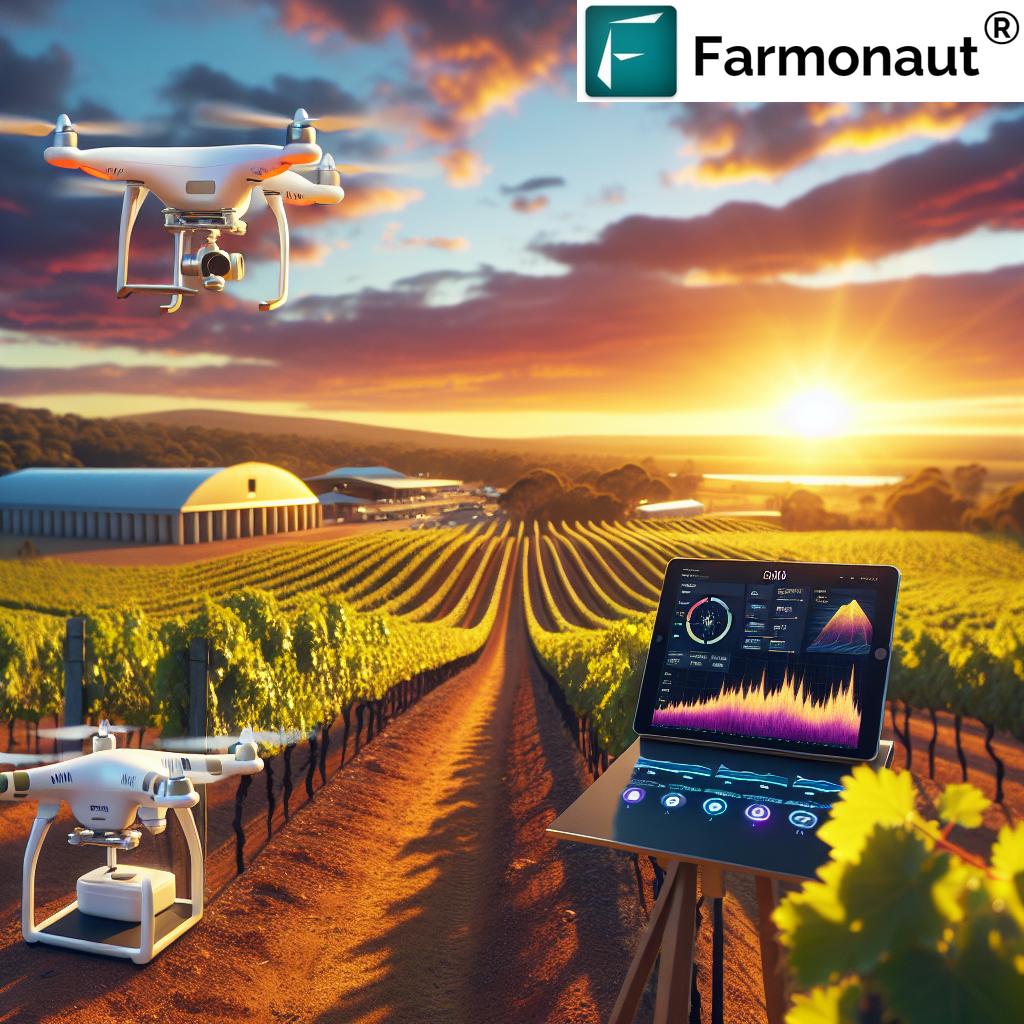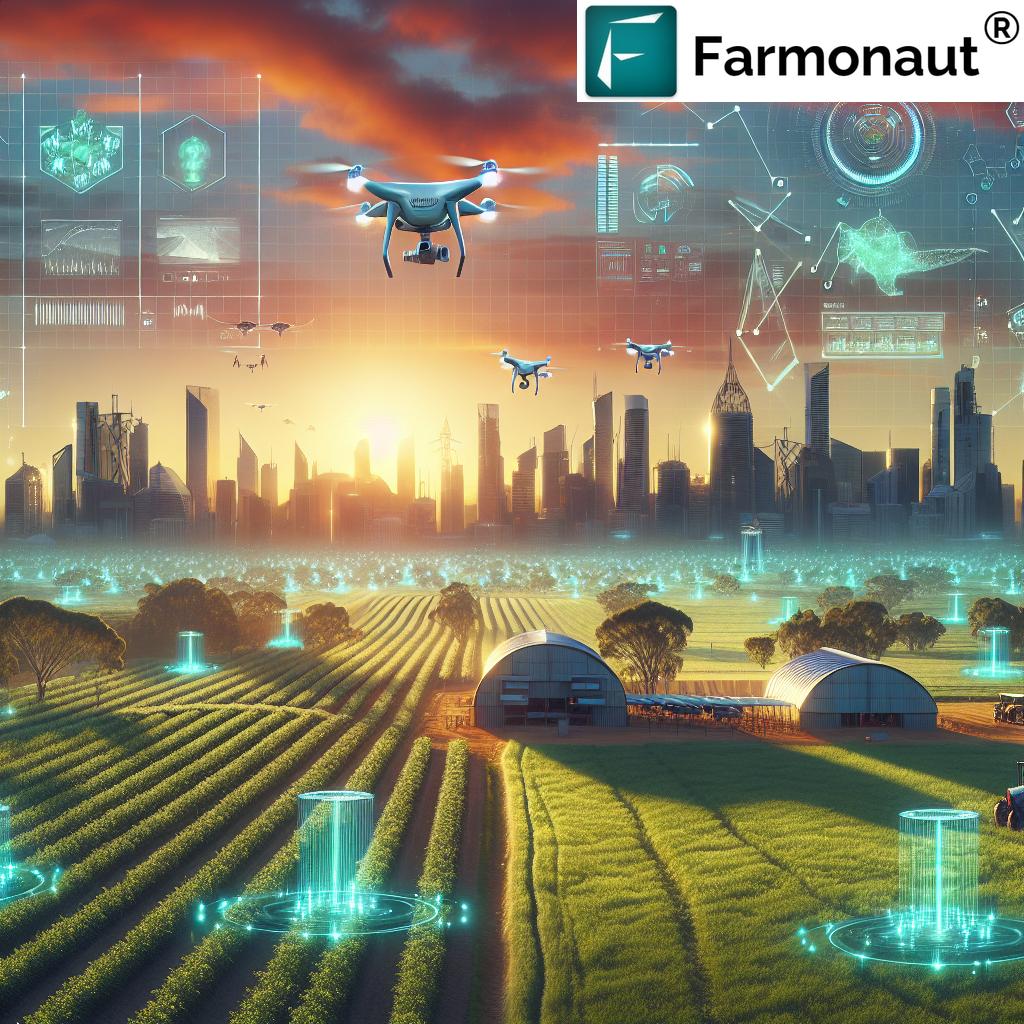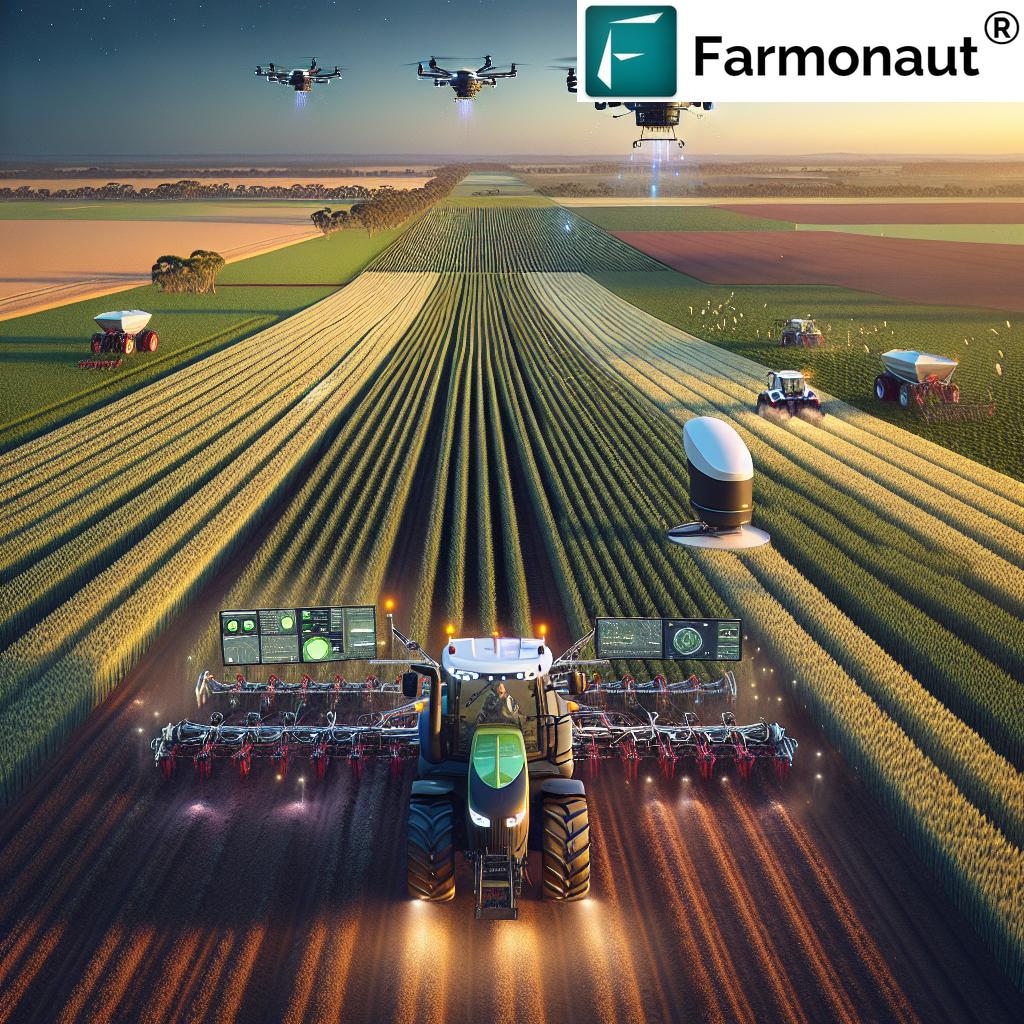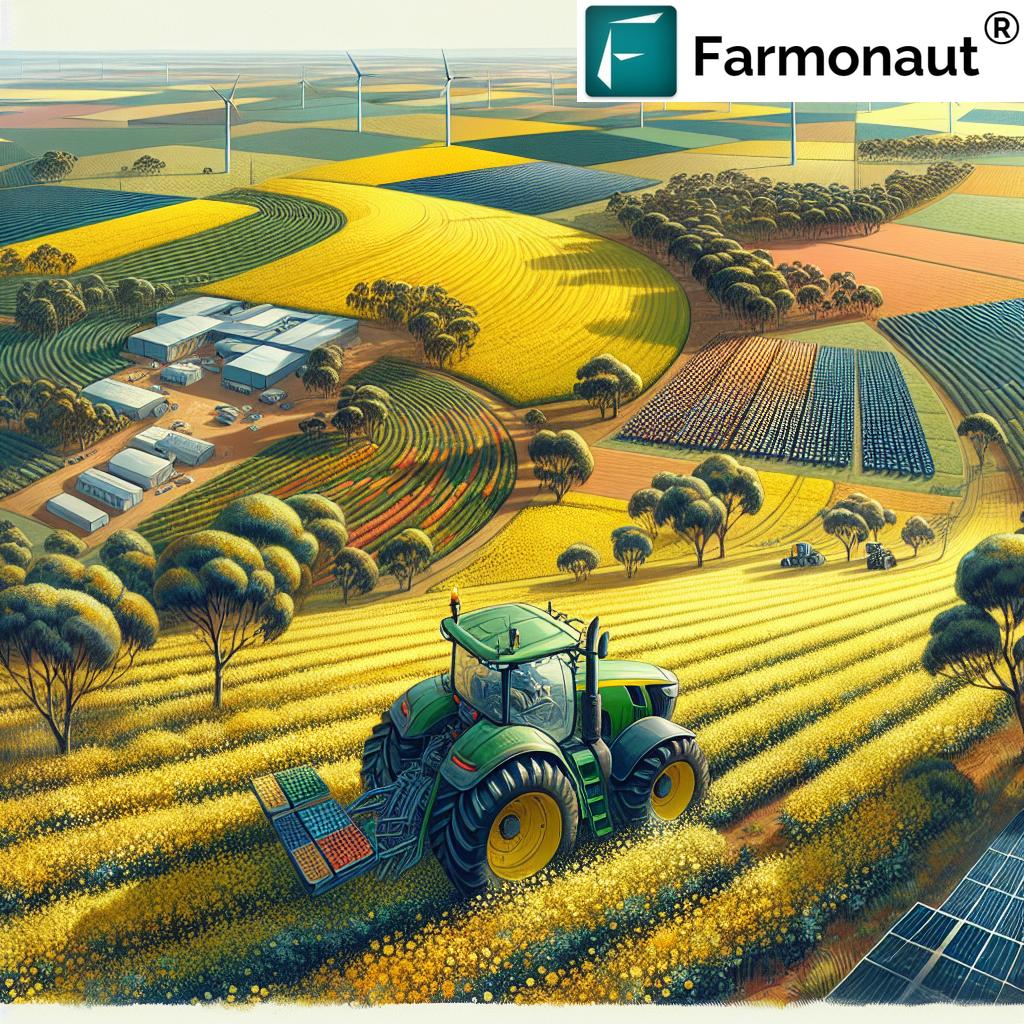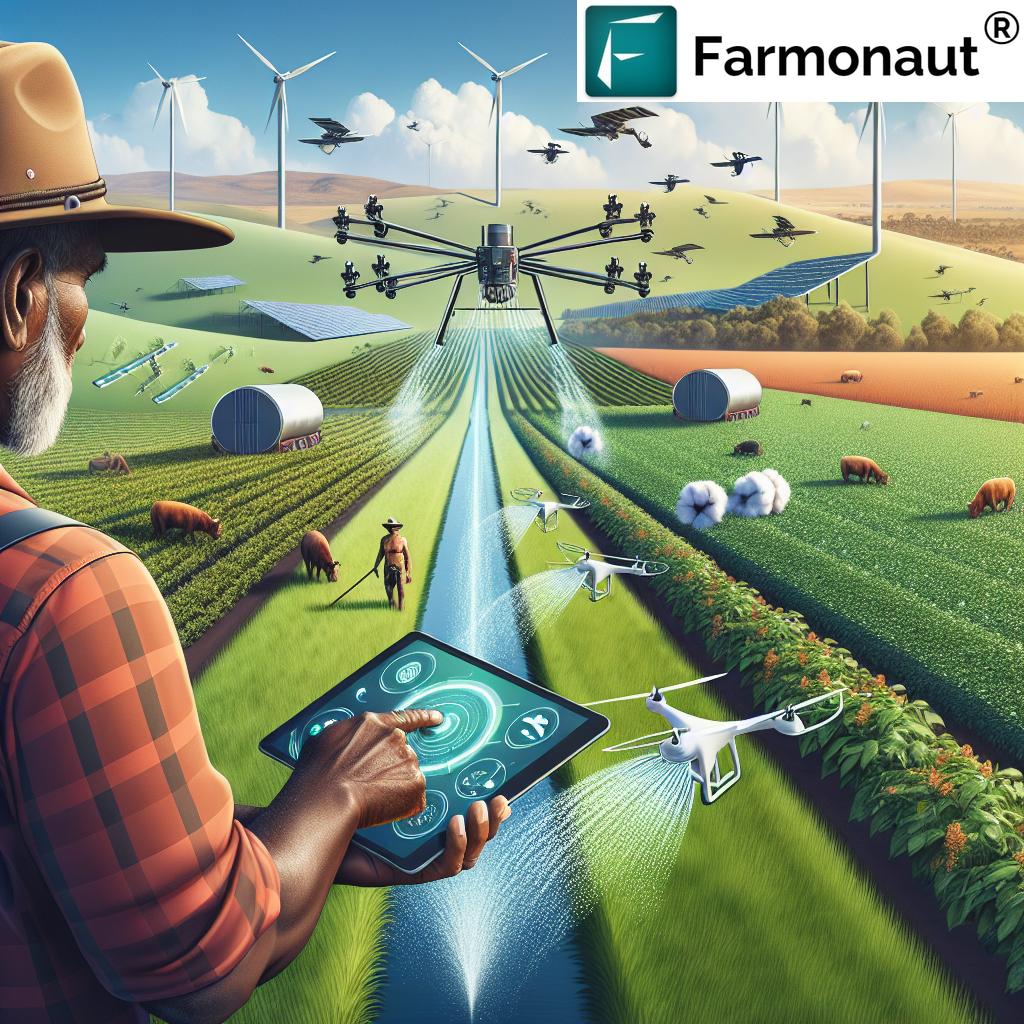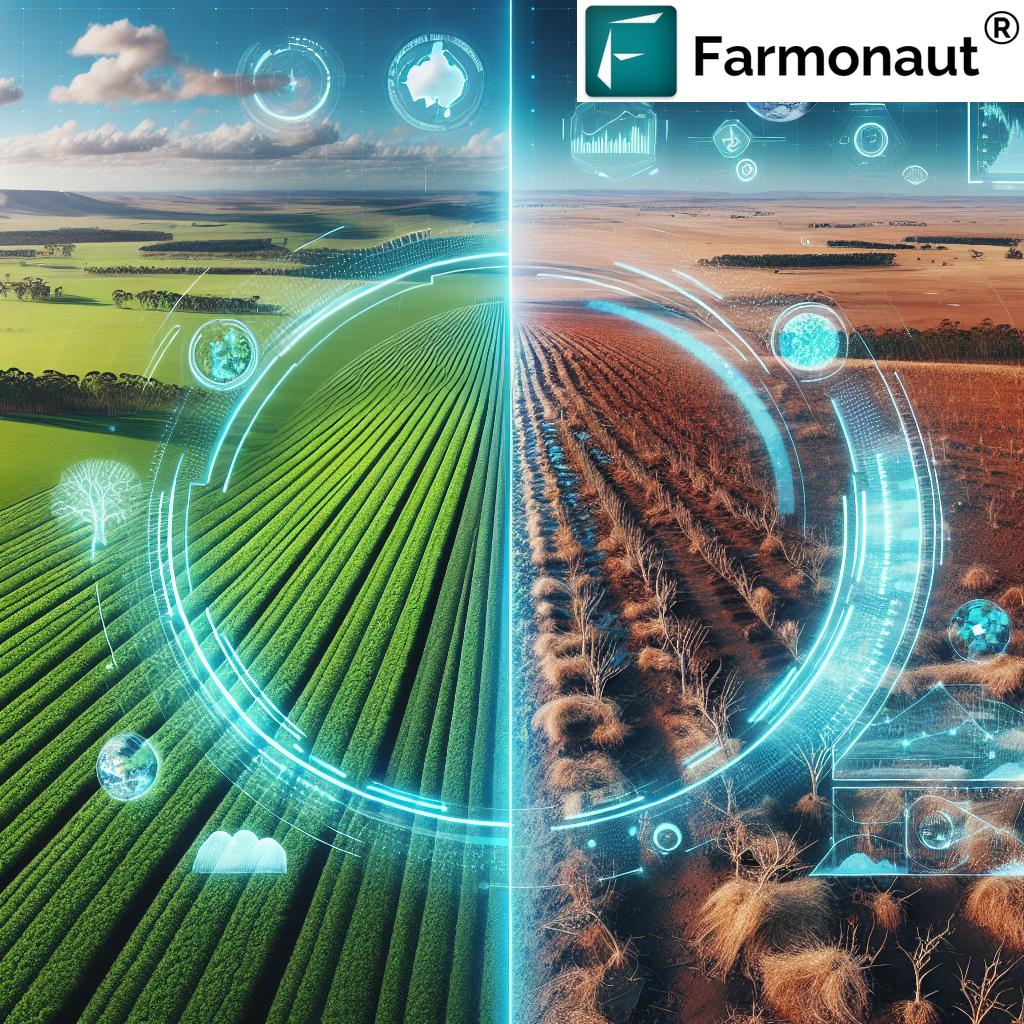Revolutionizing Australian Rice Farming: Sustainable Water-Saving Technologies for Enhanced Productivity
“Australian rice farmers aim to achieve 1.5 tonnes of rice per megalitre of water by 2027, showcasing improved efficiency.”
Welcome to our comprehensive exploration of the cutting-edge advancements revolutionizing rice farming in Australia. As we delve into the world of sustainable agricultural practices and innovative water-saving technologies, we’ll uncover how the Rice Extension Program is spearheading a transformation in the industry. Our journey will take us through the landscape of precision agriculture, improved water use efficiency, and the collaborative efforts driving these changes.
The Rice Extension Program: Cultivating Change
At the heart of Australia’s agricultural innovation lies the Rice Extension Program, a pioneering initiative aimed at enhancing productivity and sustainability in the rice industry. This program serves as a bridge between researchers, growers, and industry leaders, fostering the adoption of best management practices and emerging technologies.
- Facilitating knowledge transfer
- Promoting sustainable farming techniques
- Encouraging adoption of water-saving technologies
- Supporting rural development and agricultural innovation
The program’s ambitious target of achieving 1.5 tonnes of rice per megalitre of water by 2027 underscores its commitment to water use efficiency and sustainable production. This goal not only challenges farmers to optimize their practices but also sets a new standard for the industry as a whole.
Water-Saving Technologies: The Cornerstone of Sustainable Rice Farming
In the arid landscape of Australia, water conservation is paramount. The rice industry has embraced a range of innovative water-saving technologies to address this challenge head-on. Let’s explore some of the groundbreaking solutions transforming rice production:
Precision Irrigation Systems
Precision irrigation systems have revolutionized water management in rice fields. These advanced systems use real-time data and automated controls to deliver water precisely where and when it’s needed, significantly reducing waste and improving efficiency.
Alternate Wetting and Drying (AWD)
AWD is a technique that involves periodically allowing paddy fields to dry instead of keeping them continuously flooded. This practice can reduce water use by up to 30% without compromising yield, making it a game-changer for water conservation in rice farming.
Laser Land Leveling
Laser land leveling ensures that rice fields are perfectly flat, allowing for uniform water distribution and reducing the amount of water needed for irrigation. This technology has shown remarkable results in improving water use efficiency and crop uniformity.
Drought-Resistant Rice Varieties
Australian researchers have developed drought-resistant rice varieties that can thrive with less water. These innovative cultivars are crucial in adapting to changing climate conditions and ensuring food security in water-scarce regions.
Soil Moisture Sensors
Advanced soil moisture sensors provide farmers with real-time data on field conditions, allowing for precise irrigation scheduling. This technology helps prevent over-watering and ensures that crops receive optimal moisture levels throughout their growth cycle.
| Technology | Water Savings (%) | Yield Impact (tonnes/ha) | Implementation Cost (AUD/ha) | Payback Period (years) | Environmental Benefits |
|---|---|---|---|---|---|
| Precision Irrigation Systems | 20-30% | +0.5 to 1.0 | 1500-2500 | 2-3 | Reduced water usage, less runoff |
| Alternate Wetting and Drying | 25-35% | -0.1 to +0.3 | 500-800 | 1-2 | Reduced methane emissions, water conservation |
| Laser Land Leveling | 15-25% | +0.3 to 0.8 | 800-1200 | 2-3 | Improved water distribution, reduced soil erosion |
| Drought-Resistant Rice Varieties | 30-40% | +0.2 to 0.6 | 200-400 | 1 | Adaptability to climate change, reduced water demand |
| Soil Moisture Sensors | 10-20% | +0.2 to 0.5 | 300-600 | 1-2 | Precision water management, reduced nutrient leaching |
As we can see from the table above, each technology offers unique benefits in terms of water savings, yield impact, and environmental benefits. The implementation costs and payback periods vary, allowing farmers to choose solutions that best fit their specific needs and resources.
The Role of Precision Agriculture in Rice Production
Precision agriculture is at the forefront of the revolution in Australian rice farming. By leveraging data-driven insights and advanced technologies, farmers can optimize every aspect of their operations, from planting to harvest.
Satellite-Based Crop Monitoring
One of the most powerful tools in precision agriculture is satellite-based crop monitoring. Companies like Farmonaut are leading the charge in this area, providing farmers with invaluable insights into their crops’ health and development. Farmonaut’s satellite-based crop monitoring enhances decision-making for sustainable rice production across Australia’s vast agricultural landscape.

Farmonaut’s technology allows farmers to:
- Monitor crop health in real-time
- Detect early signs of stress or disease
- Optimize irrigation schedules
- Make data-driven decisions on resource allocation
By integrating satellite data with on-ground sensors and weather information, Farmonaut provides a comprehensive view of field conditions, enabling farmers to take proactive measures to improve crop yields and water use efficiency.
Drone Technology in Rice Farming
Drones equipped with multispectral cameras are becoming increasingly popular in rice farming. These aerial devices can quickly survey large areas, providing high-resolution imagery that complements satellite data. Drones are particularly useful for:
- Assessing plant health and vigor
- Identifying pest and disease outbreaks
- Creating detailed topographic maps for precision land leveling
- Monitoring flood levels during irrigation
The integration of drone technology with satellite-based monitoring systems like Farmonaut creates a powerful toolkit for rice farmers, enabling them to make informed decisions at every stage of the growing season.
Collaborative Efforts Driving Industry Sustainability
The transformation of Australian rice farming is not the work of farmers alone. It’s the result of a collaborative effort involving researchers, industry bodies, and government agencies. This collective approach ensures that innovations are practical, scalable, and aligned with the industry’s long-term sustainability goals.
Research and Development Initiatives
Australian research institutions are at the forefront of developing new rice varieties and farming techniques tailored to local conditions. These R&D efforts focus on:
- Breeding drought-tolerant and water-efficient rice varieties
- Developing sustainable pest management strategies
- Improving soil health and nutrient management
- Advancing irrigation technologies and practices
The close collaboration between researchers and farmers ensures that scientific advancements are quickly translated into practical applications in the field.
Industry-Led Programs
Industry bodies play a crucial role in driving adoption of best practices and new technologies. Programs like the Rice Extension Program provide:
- Tailored agronomic advice
- Training workshops and field days
- Access to the latest research findings
- Networking opportunities for knowledge sharing
These initiatives create a supportive ecosystem that encourages innovation and continuous improvement across the industry.
The Economic Impact of Water-Saving Technologies
While the environmental benefits of water-saving technologies are clear, their economic impact is equally significant. By improving water use efficiency, these innovations are helping to boost profitability and ensure the long-term viability of rice farming in Australia.
Reduced Input Costs
Water-saving technologies lead to significant reductions in water usage, which translates directly to lower input costs for farmers. In regions where water is scarce and expensive, these savings can make a substantial difference to a farm’s bottom line.
Improved Yields and Quality
Many water-saving techniques not only conserve resources but also contribute to improved crop yields and quality. For example, precise irrigation management can reduce the incidence of water stress, leading to healthier plants and better grain quality.
Access to Premium Markets
As consumers become more environmentally conscious, there’s growing demand for sustainably produced rice. Farmers adopting water-saving technologies may be able to access premium markets and command higher prices for their crops.
Long-Term Sustainability
By reducing water usage and improving overall resource efficiency, these technologies help ensure the long-term sustainability of rice farming in Australia. This is particularly crucial in the face of climate change and increasing water scarcity.
“Farmonaut’s satellite-based crop monitoring enhances decision-making for sustainable rice production across Australia’s vast agricultural landscape.”
Farmonaut: Empowering Farmers with Cutting-Edge Technology
In the realm of agricultural innovation, Farmonaut stands out as a key player in revolutionizing farm management through advanced satellite-based solutions. Let’s explore how Farmonaut’s technology is making a significant impact on sustainable rice farming in Australia.
Real-Time Crop Health Monitoring
Farmonaut’s satellite-based crop monitoring system provides rice farmers with up-to-date information on their fields’ health status. This real-time data allows for:
- Early detection of crop stress
- Timely intervention in case of pest or disease outbreaks
- Optimization of fertilizer application
- Improved water management decisions
By leveraging this technology, farmers can address issues promptly, potentially saving crops and reducing resource waste.
AI-Powered Advisory System
Farmonaut’s AI-driven advisory system, Jeevn AI, offers personalized recommendations based on satellite data, weather forecasts, and crop-specific information. This intelligent system helps rice farmers:
- Plan irrigation schedules more effectively
- Make informed decisions on planting and harvesting times
- Optimize resource allocation for maximum yield
- Adapt to changing weather conditions
The combination of satellite imagery and AI analytics provides farmers with actionable insights that can significantly improve their productivity and sustainability.
Integration with Precision Agriculture Tools
Farmonaut’s platform is designed to integrate seamlessly with other precision agriculture tools, creating a comprehensive farm management ecosystem. This integration allows farmers to:
- Combine satellite data with ground-level sensors
- Incorporate data from drones and other IoT devices
- Create detailed field maps for variable rate applications
- Track and analyze farm operations over time
By providing a centralized platform for data collection and analysis, Farmonaut empowers farmers to make data-driven decisions across all aspects of their operations.
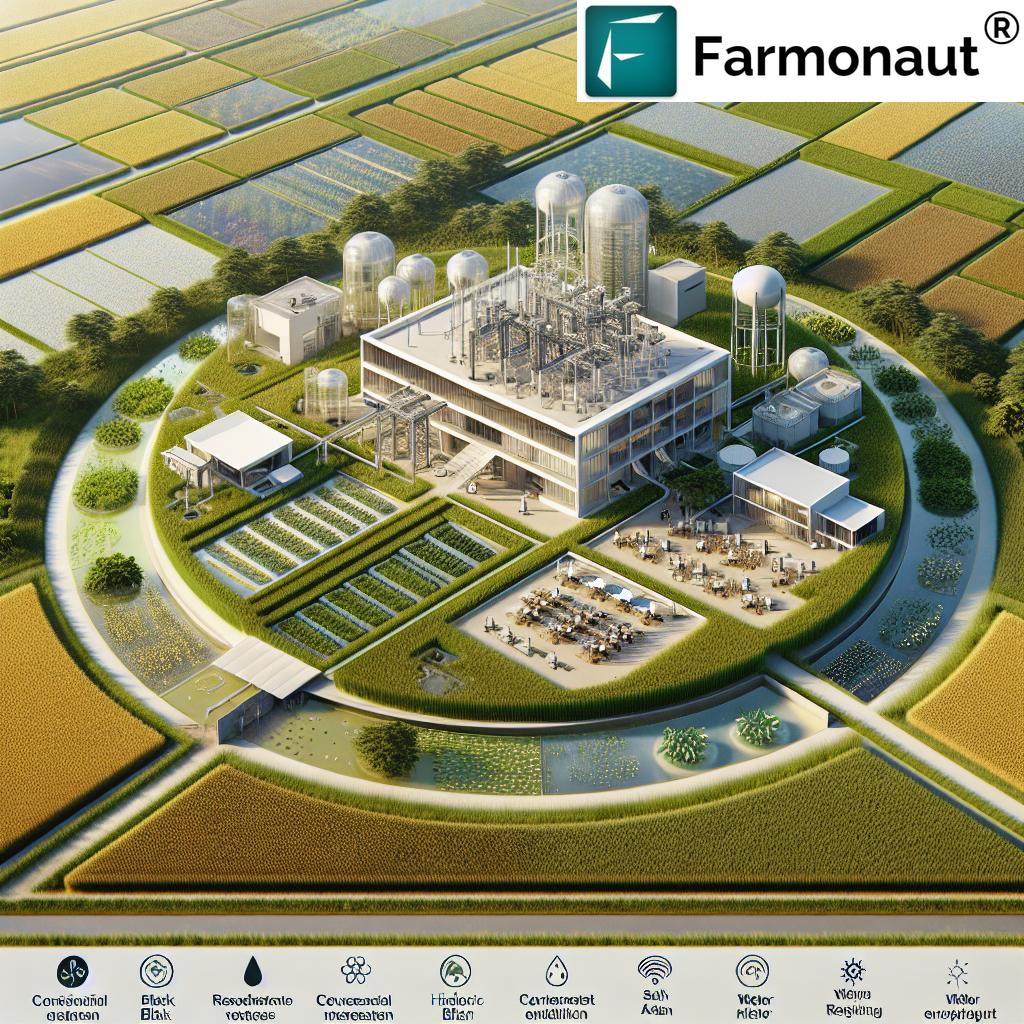
Accessibility and Ease of Use
One of Farmonaut’s key strengths is its accessibility. The platform is available through various channels, making it easy for farmers of all tech levels to benefit from its features:
- Android App: For on-the-go access to farm data
- iOS App: Bringing Farmonaut’s power to Apple devices
- Web Application: For comprehensive farm management from any browser
- API Access: Allowing integration with other farm management software
This multi-platform approach ensures that farmers can access critical information whenever and wherever they need it, supporting timely decision-making in the field.
The Future of Sustainable Rice Farming in Australia
As we look to the future, the Australian rice industry is poised for continued innovation and growth. The integration of water-saving technologies, precision agriculture, and data-driven decision-making is setting a new standard for sustainable farming practices.
Emerging Technologies on the Horizon
Several emerging technologies show promise for further revolutionizing rice farming:
- AI-powered predictive analytics for crop yield forecasting
- Blockchain technology for improved supply chain transparency
- Advanced robotics for automated planting and harvesting
- Gene editing techniques for developing more resilient rice varieties
These innovations have the potential to address ongoing challenges in water management, climate adaptation, and food security.
Building a Sustainable Agricultural Workforce
As the industry evolves, there’s a growing need for a skilled agricultural workforce capable of leveraging these new technologies. Initiatives focusing on:
- Agricultural education and training programs
- Rural development and job creation
- Support for young farmers and agri-entrepreneurs
- Continuous professional development for existing farmers
These efforts will be crucial in ensuring that the Australian rice industry remains competitive and sustainable in the long term.
Global Impact and Export Opportunities
Australia’s advancements in sustainable rice farming have implications beyond its borders. As the world grapples with the challenges of feeding a growing population in the face of climate change, Australian innovations in water-saving technologies and sustainable production methods could become valuable exports in themselves.
The potential for knowledge transfer and technology sharing opens up new opportunities for:
- International collaborations and partnerships
- Export of sustainable farming expertise
- Leadership in global agricultural sustainability initiatives
By continuing to innovate and share best practices, Australia can play a significant role in shaping the future of sustainable agriculture worldwide.
Embracing a Sustainable Future with Farmonaut
As we’ve explored throughout this blog, the future of Australian rice farming is intrinsically linked to the adoption of sustainable, water-saving technologies and data-driven farming practices. Farmonaut stands at the forefront of this agricultural revolution, offering tools and insights that empower farmers to make informed decisions, optimize resource use, and boost productivity.
To experience the benefits of Farmonaut’s cutting-edge technology firsthand, we invite you to explore our range of solutions:
For developers interested in integrating Farmonaut’s powerful satellite and weather data into their own applications, we also offer comprehensive API access. Learn more about our API capabilities and access our developer documentation here:
Subscription Plans
Frequently Asked Questions
Q: How does Farmonaut’s satellite-based crop monitoring work?
A: Farmonaut uses multispectral satellite imagery to analyze crop health, soil moisture, and other vital metrics. This data is processed using advanced algorithms to provide actionable insights to farmers, helping them make informed decisions about irrigation, fertilization, and pest management.
Q: Can Farmonaut’s technology be used for all types of rice farming?
A: Yes, Farmonaut’s technology is versatile and can be applied to various rice farming methods, including traditional flooded paddies and more modern, water-efficient techniques. The platform can be customized to suit different farming practices and local conditions.
Q: How often is the satellite data updated?
A: The frequency of satellite data updates depends on the subscription plan. Typically, Farmonaut provides updates every 3-5 days, ensuring that farmers have access to recent and relevant information about their crops.
Q: Is Farmonaut’s technology difficult to implement for farmers who are not tech-savvy?
A: No, Farmonaut is designed with user-friendliness in mind. The platform offers intuitive interfaces across its web and mobile applications, making it accessible to farmers with varying levels of technological expertise. Additionally, Farmonaut provides customer support and training to help users get the most out of the technology.
Q: How does Farmonaut contribute to water conservation in rice farming?
A: Farmonaut’s technology helps farmers optimize their water use by providing accurate data on soil moisture levels and crop water needs. This information allows for more precise irrigation scheduling, reducing water waste and improving overall water use efficiency in rice production.
Conclusion
The revolution in Australian rice farming, driven by water-saving technologies and innovative practices, is reshaping the industry’s future. Through the adoption of precision agriculture tools, collaborative research efforts, and the integration of advanced technologies like those offered by Farmonaut, Australian rice farmers are setting new standards for productivity and sustainability.
As we continue to face challenges such as climate change and water scarcity, the innovations discussed in this blog will play a crucial role in ensuring food security and environmental stewardship. By embracing these technologies and sustainable practices, the Australian rice industry is not only securing its own future but also contributing to global agricultural sustainability.
We encourage all stakeholders in the rice industry – from farmers and researchers to policymakers and consumers – to support and engage with these innovative approaches. Together, we can build a more sustainable, productive, and resilient future for rice farming in Australia and beyond.





